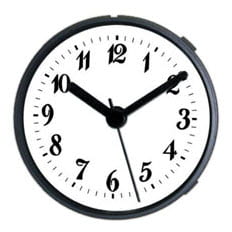
Clockmaking with Individual Clock Hands and Dials
Clock hands and dials give one of the most distinctive visual effect of a timepiece. Clock dials as well as hands work as a team in drawing out design and tone, and they aid the onlooker to acquire the time swiftly as long as they are contrasting and also well matched. In this write-up we discover just how to attain a well-matched and contrasting collection, and just how to finest represent your wanted appearance.
Clock hands and dials are really the focal point, as well as it is not surprising that clockmakers dedicate their efforts to integrate them strikingly. This is not to minimize the role of the clock activity in correctly positioning the hands over the face continuously. Yet the motion is pure feature and also remains hidden; design (kind) must be drawn out through the visual elements.
Building clocks from square one entails picking your very own parts, and also you must pursue an unified, unified look. The hands and dial are the all-natural focus, yet the total performance of the timepiece needs to be determined initially. Including particular features or novelties might have an effect on one or both of these part.
There is a great range of clock movements out there, each with a particular mix of features. The important function is timekeeping, indicating showing the current time continuously to whatever degree preferred. That is, though one of the most usual cycle is twelve hours (when whatever returns to its starting state), some movements expand the cycle to something much longer, possibly needing a various looking dial and also possibly entailing an additional hand.
For example, you can get a 24-hour motion, cycling daily rather than two times. The corresponding dial will certainly reveal an added loads numbers, either doubling up with the very first lots or spread out over the area; the last style is not available with the exception of huge clocks. One activity revolves the hr hand two times a day, the other once a day.
Longer cycles are the week and also the month. These movements need calibrated dials that reveal the days of the week or dates in the month, respectively. An extra hand indicate the corresponding day or date.
Still various other movements supply keeping an eye on tide level (for those in seaside setups) or reporting climate sensations such as temperature and moisture. The dials and hands for these are particularly designed to collaborate with them, as well as may resemble the circular format or may include a solitary hand going back and forth over a minimal range.
As soon as your clock motion is picked, you can transform your attention to the hands as well as dials, focusing on dimensions as well as styles. Dial as well as hand sizes must match, obviously, and their designs must be corresponding. Using include a series of forms and shades, and dial text comes in Arabic or Roman (or signs).
Dial diameter dimensions range from a few inches to perhaps 6 feet (with substantial clocks installed directly on a wall as opposed to searching for large sufficient instances). As soon as you exceed about 14 inches, the minute hand becomes also hefty for a regular activity to revolve. In such cases purchase a “high-torque” variation of the very same motor you have chosen, as well as it must do effectively.
Give some thought to whether you desire your clock to have a pre-owned, as well as if so, whether you prefer the ordinary tick-and-stop (audible) activity or a constant, silent move activity. The motor must support one activity or the other, and also you can make a decision merely not to place the second hand if it appears peripheral. clock kits
As soon as you understand the fundamentals of structure timepieces from parts, you may wish to check out other facets such as seeming chimes or reproducing older clocks with oscillating pendulums. However essential clockmaking starts with individual clock hands and also dials.
This is your first comment!
To delete a comment, just log in to your dashboard and you will find the option to edit or delete them.
You can learn more about comments here.